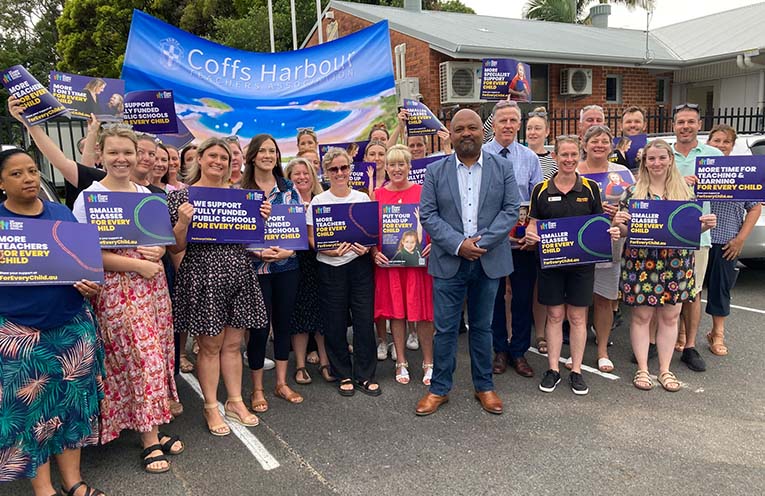
REGIONAL and rural communities are bearing the brunt of a NSW teacher shortfall, local teachers have heard.
The NSW Teachers Federation is ramping up its campaign to fully resource North Coast public schools, meeting with teachers in Coffs Harbour last week.
 Advertise with News of The Area today.
Advertise with News of The Area today.It’s worth it for your business.
Message us.
Phone us – (02) 4981 8882.
Email us – media@newsofthearea.com.au
NSW Teachers Federation President Henry Rajendra said the National School Reform Agreement had left NSW public schools grappling with a funding deficit of about eleven percent in 2024.
The National School Reform Agreement is a joint agreement between the Commonwealth, states and territories designed to improve outcomes in Australian schools.
It sets out national reform directions and targets that governments agree to pursue over a set period of time.
It also links funding levels to the targets.
Mr Rajendra said the shortfall translated to $1.9 billion in 2024 and equated to a shortage of more than 10,000 permanent school-based teachers.
He said figures released this month revealed 174 vacancies in schools in the Rural North and West region, which includes Coffs Harbour and the Mid North Coast, affecting 69 percent of the region’s 252 schools.
Mr Rajendra called on Prime Minister Anthony Albanese to “provide the funding needed to give all kids a decent shot at life”.
“Private schools in Sydney, which receive substantial public funding, are splurging on unnecessary vanity projects such as equestrian centres and Scottish castles, while public schools are missing out,” he said.
“Premier Chris Minns and Deputy Premier and Education Minister Prue Car are doing their bit by lifting salaries to tackle the teacher shortages.
“But now it’s time the Prime Minister joined the effort.
“Proper funding would mean more teachers, delivering smaller class sizes.
“This would allow more one-on-one time for students with complex needs.”
A report released by the Australian Education Union last month highlighted the gap, with one Sydney private school, Cranbrook, spending more on a new pool and expanded fitness and drama facilities in 2021 ($63.5 million) than governments spent on 2,549 public schools, which educate more than 472,000 students.
For NSW schools, the report also found a 30 percent growth in demountables between 2011 and 2022 to over 5,000, no ongoing capital funding from the Commonwealth despite calls from the NSW Government, and that the
average annual per student capital investment from 2012-2021 was $1,052 for public and $2,331 for private.
“There’s no better investment than giving students the education they need and deserve,” Mr Rajendra said.
“It allows them to explode out of the starting blocks and contribute back to their community and the nation.”
By Mike HELY
